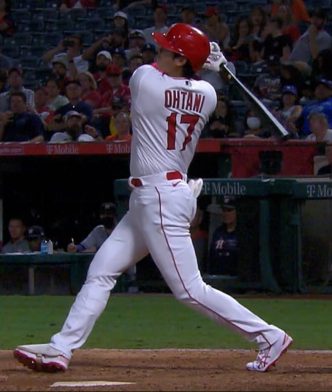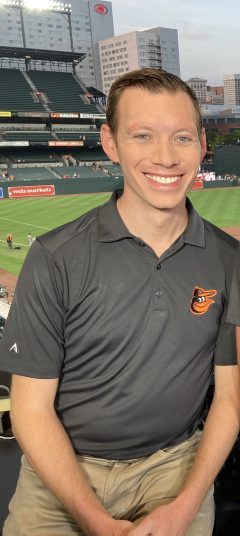
Now-retiring Stephen Strasburg has much to be proud of, and his career has much to teach future pitchers and coaches about mechanical issues.
There was no pleasure for me when I wrote, in June, that since Stephen Strasburg underwent throacic outlet syndrome surgery he’d pitched only once, a year before I wrote. And, that it was more than likely that his career was really over.
Strasburg’s attempts to rehabilitate since that surgery haven’t worked. The 2019 World Series MVP tried everything, all the way to limiting his workouts to his lower body but discovering they strained his upper body thanks to nerve damage. Two months ago he hoped to accept it if his body told him not to even think about the mound again.
He’s accepted it. The word came forth Thursday that Strasburg’s calling it a career, with only a formal September announcement to come.
The news hit the Internet running when we’d barely processed fully that Shohei Ohtani suffered a second ulnar collateral ligament tear in his pitching arm. If Ohtani undergoes a second Tommy John surgery, he has a better chance of returning to the mound at all. Assuming his continuation as the Angels’ designated hitter doesn’t cause even more damage before he might undergo the operation.
Strasburg’s eventual fate may have been far more cut-and-dried, for all the man’s determination to return after assorted injuries. The root was his pitching style, the inverted-W positioning of his arms, with both elbows above his shoulders as he cocked to throw a pitch. The positioning strains elbow and shoulder alike.
In Strasburg’s and others’ cases, it’s numbered career days even if they can’t really pinpoint the likely end. It’s also a comparatively recent phenomenon. The inverted-W positioning, Clearing the Bases author Allen Barra observed in 2011, began coming into play when the full windup began disappearing from the pitching repertoire.
Whenever you ask how the like of Hall of Famers Warren Spahn and Juan Marichal could pitch 250+ innings a season without arm or shoulder trouble, Barra says, the answers are several (including that they just might have been outliers) but the primary just might be the full windup. (In Marichal’s case, he had about sixteen different ones, not to mention about a dozen different leg kicks including his fabled Rockettes-high kick.)
[It] took advantage of the momentum of their whole body to give velocity to the pitch. In recent decades, with pitchers more concerned about holding runners on base, the windup has largely gone the way of the two-dollar hot dog. The Inverted W is the result of a pitcher trying to add speed or finesse on a pitch by forcing the delivery—in other words, his arm working against his body instead of with it.
Strasburg almost never pitched with a full windup. The most he’d show in the way of any kind of windup would be lifting his hands to just below his chin, before turning to throw and cocking into that inverted-W before throwing. WIth his landing leg’s foot planted ahead of, not with the throw.
The no-windup delivery by itself isn’t dangerous. Don Larsen pitched his perfect game in the 1956 World Series using a no-windup delivery, hands set at the letters before throwing. But Larsen also didn’t have the inverted-W. His pitching elbow didn’t come above his shoulder, his arm was “up and ready,” above his head releasing the ball, as his left foot landed.
A no- or little-windup delivery with the inverted-W, alas, is something else entirely. That inverted-W plus 2003 overwork contributed the bulk of the injury trouble that turned Mark Prior’s pitching career from phenomenal to science experiment. (There were a few other injuries, of course.) But I bet you don’t remember a Hall of Famer whose career ended because of it.

Don Drysdale—the inverted-W put paid to the Hall of Famer’s career in 1969 with a dissipated rotator cuff.
Don Drysdale had the inverted-W. He pitched longer with it than you might reasonably expect, even through previous shoulder pains. The year after he broke Walter Johnson’s consecutive shutout-innings record, Drysdale’s rotator cuff dissipated and ended his career in a time when surgery on the cuff didn’t exist.
Barra wrote that Joba Chamberlain was the Yankees’ Strasburg, the single hardest throwing righthander the Yankee system had produced in decades. He also observed that, with all the Yankee tinkering upon the much-hyped, talented Chamberlain, they missed the biggest hindrance he’d developed, the inverted-W cock-and-throw style.
The issue with the inverted-W isn’t just the elbow and shoulder straining. It’s a timing issue, too. As analyst Chris O’Leary (the aforementioned “up and ready” was his descriptive phrase) has written, “[T]he position isn’t damaging in and of itself.”
However, by coming to this position, [a pitcher] is ensuring that his pitching arm will not be in the proper position at the moment his shoulders start to turn. As with pitchers with other timing problems like rushing, because his pitching arm is so late, he will dramatically increase the stress on both his elbow and shoulder.”
That’s “late” as in a pitcher’s front, landing foot planting before his arm is back around throwing the pitch, not as he throws it.
Strasburg may have been extremely fortunate to return from Tommy John surgery as a successful pitcher. But his mechanics and the timing issues they can cause, even if he modified them somewhat by the time of the 2019 postseason (he’d long fixed an issue with his pivot foot, training it to be fully parallel to the rubber), may have been destined to take him out at last with a shoulder compromised so severely that he couldn’t even pick his daughters up for fatherly hugs and affection.
That’s more than enough to make a man think that, no matter how much he loves the thrill of competition and the spoils of success, there comes the moment when it’s just not worth pursuing it further. Ask Hall of Famer-in-waiting Joe Mauer, who finally retired because of what concussions did not just to his career but to his ability to be the husband and father he prefers to be.
They’ll still have to talk about how to handle the rest of Strasburg’s uninsured mega-contract, the one he signed after coming away as that 2019 Series MVP and exercising his opt-out clause, only to click his spikes three times saying “there’s no place like home!” and getting the deal. He didn’t want to leave Washington, and God plus His servant Walter Johnson know Washington didn’t want him to leave, either.
He didn’t ask for his body to keep him from pitching and earning the dollars to come, no matter how treacherous his pitching mechanics proved. No professional athlete does. The mind overcomes the body’s basics only so often, and no two bodies are exactly alike. Strasburg’s kept him from posting the Hall of Fame case his talent and performances when healthy suggested. Now it sends him to retirement at 35.
The Nats couldn’t insure Strasburg’s post-2019 deal without paying ferociously high premiums. If Strasburg had retired without injury, he’d have left the remainder on the table. But with TOS putting paid to his career the Nats will pay out the remaining $150 million on the deal, including some deferred payments that will keep paying the righthander through 2029.
If you consider the jumpstart his original arrival gave the Nats for credibility, the deadly postseason resume (1.46 ERA; 2.07 fielding-independent pitching; 0.94 walks/hits per inning pitched; 11.5 strikeouts per nine innings), that 2019 Series MVP pushing the Nats toward the finish line and into the Promised Land, the franchise strikeout leadership, Strasburg has earned every dollar.
Maybe the real miracle was that Strasburg could and did pitch so well as long as he did. A young man that talented, who could and did deliver some big moments in a career that was good, often great, sometimes beyond these dimensions, has to say goodbye not because age caught up to him but because his body said, “Halt right there, brah” and meant it this time.
It took Strasburg long enough to let his pleasure in the game show through his usually stoic countenance, in large part because the early hype might have suffocated him. But he went from baseball’s No. 1 draft pick to a World Series MVP before he was finished. That’s something in which to take pride and joy.
Almost as much pride and joy as we hope Strasburg enjoys raising his family and living whatever second act in life that he chooses to live.






